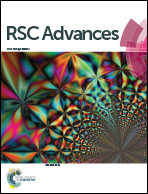Development of nanolaminated multilayer Ni–P alloy coatings for better corrosion protection
Abstract
Nanolaminated multilayer Nickel–Phosphorous (Ni–P) alloy coatings were developed on mild steel from a citrate bath using glycerol as an additive. Multilayer Ni–P alloy coatings having nanolaminated layers of alloys of alternatively different compositions have been developed using pulsed direct current (DC) by cyclic modulation of the cathode current density. The composition and number (hence thickness) of the layers were tailored by periodic modulation of the current density (c.d.) and time using a programmable power source. The deposition conditions were optimized for both the composition and thickness of the individual layers for the best performance of the coatings against corrosion. Electrochemical corrosion study, evaluated by potentiodynamic polarization and electrochemical impedance spectroscopy (EIS) demonstrated that the multilayer Ni–P alloy coating with 300 nanolaminated layers, represented as (Ni–P)1.0/4.0/300 showed several fold better corrosion resistance compared to its monolayer counterpart (deposited using regular DC) from the same electrolytic bath. Drastic improvement in the corrosion protection efficacy of the nanolaminated multilayer Ni–P alloy coatings were attributed to an increase in number of interfaces, separating layers of alloys having different morphologies, compositions and phase structures, which was supported by scanning electron microscopy (SEM), energy dispersive spectroscopy (EDS) and X-ray diffraction (XRD) analyses, respectively. The corrosion rates of the multilayer Ni–P alloy coatings were decreased with increasing number of layers, only up to an optimal level and then increased. The increase in corrosion rates at a higher degree of layering were attributed to the diffusion of layers, due to the very short deposition time of each layer.


 Please wait while we load your content...
Please wait while we load your content...